Anfang Juli erscheint das neue Album von Anohni und den wieder aktivierten Johnsons. “My Back Was A Bridge For You To Cross” ist das erste komplette Album seit “Hopelessness” aus dem Jahr 2016.  Weiterlesen
Weiterlesen
Schlagwort-Archive: Antony And The Johnsons
Anohni. My Truth. James Elaine, Peter Hujar, Kazuo Ohno. Ausstellung in der Kunsthalle Bielefeld (23.07-16.10 2016)
Vom 23. Juli bis zum 16. Oktober 2016 zeigt die Kunsthalle Bielefeld die Ausstellung “Anohni. My Truth”. Anohni machte sich im letzten Jahrzehnt als Antony Hegarty und Sänger der New Yorker Band Antony and the Johnsons einen Namen. Neben der Musik gab es schon immer visuelle Arbeiten, so z.B. ein Bildband mit Zeichnungen und Kollagen, der dem Johnsons-Album “Swanlights” beilag. Auf “My Truth” zeigt Anohni neben eigenen Arbeiten Werke von James Elaine, Peter Hujar und dem v.a. als Butoh-Tänzer bekannten Kazuo Ohno.  Weiterlesen
Weiterlesen
ANOHNI: Hopelessnes
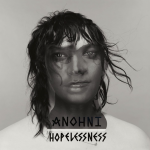 Viele sind traurig, dass es Antony And The Johnsons nun nicht mehr gibt, ebenso wie den Sänger Antony Hegarty. Kann man es ihnen verdenken? Sicher nicht, denn die Band hat im Laufe ihres Bestehens mehrfach Außergewöhnliches in die Welt gesetzt, und Leser von Seiten wie dieser kennen ihre Musik in der Regel noch ein paar Jahre länger als all die Indiehanseln da draußen, die von einer zehnjährigen Bandgeschichte faseln und „I am a Bird Now“ für das Debüt halten. Weiterlesen
Viele sind traurig, dass es Antony And The Johnsons nun nicht mehr gibt, ebenso wie den Sänger Antony Hegarty. Kann man es ihnen verdenken? Sicher nicht, denn die Band hat im Laufe ihres Bestehens mehrfach Außergewöhnliches in die Welt gesetzt, und Leser von Seiten wie dieser kennen ihre Musik in der Regel noch ein paar Jahre länger als all die Indiehanseln da draußen, die von einer zehnjährigen Bandgeschichte faseln und „I am a Bird Now“ für das Debüt halten. Weiterlesen
JULIA KENT: Asperities
 Viele der Kompositionen Julia Kents sind so dezent gestaltet, dass beim beiläufigen Hören der Eindruck entstehen könnte, ihre Cellostücke seien alle nach einem ähnlichen Muster gestrickt und zwischen den einzelnen Alben bestünden keine großen Unterschiede. Bei genauerem Hinhören fällt auf, dass ihre mit dezenter Elektronik und Feldaufnahmen angereicherten Cello-Loops durchaus eine nachvollziehbare Wandlung erfahren haben. Ohne den repetitiven Minimalismus eines frühen Albums wie „Delay“ zu suspendieren, steht bei neueren Aufnahmen eine Weiterlesen
Viele der Kompositionen Julia Kents sind so dezent gestaltet, dass beim beiläufigen Hören der Eindruck entstehen könnte, ihre Cellostücke seien alle nach einem ähnlichen Muster gestrickt und zwischen den einzelnen Alben bestünden keine großen Unterschiede. Bei genauerem Hinhören fällt auf, dass ihre mit dezenter Elektronik und Feldaufnahmen angereicherten Cello-Loops durchaus eine nachvollziehbare Wandlung erfahren haben. Ohne den repetitiven Minimalismus eines frühen Albums wie „Delay“ zu suspendieren, steht bei neueren Aufnahmen eine Weiterlesen
JULIA KENT: Character
 Man muss nicht gleich an etwas so Offensichtliches wie den Bildungsroman denken, wenn jemand das Leben mit einer literarischen Erzählung vergleicht. Jenseits kohärenter Geschichten mit all ihren Ausschmückungen und Auslassungen ist das menschliche Bewusstsein ein stets neu befeuerter narrativer Prozess, voll von ineinander verschlungenen Fragmenten erzählender, beschreibender und kommentierender Art. Was daraus entsteht ist ein Selbstbild als work in progress. Die Seelenkunde trägt dem vielfältig Rechnung, und für manche Schulen der Psychoanalyse ist der sogenannte Neurotiker primär jemand, der eine unvorteilhafte Autobiografie entwirft und lernen sollte, an Stil, Modus und Motiven zu feilen. Weiterlesen
Man muss nicht gleich an etwas so Offensichtliches wie den Bildungsroman denken, wenn jemand das Leben mit einer literarischen Erzählung vergleicht. Jenseits kohärenter Geschichten mit all ihren Ausschmückungen und Auslassungen ist das menschliche Bewusstsein ein stets neu befeuerter narrativer Prozess, voll von ineinander verschlungenen Fragmenten erzählender, beschreibender und kommentierender Art. Was daraus entsteht ist ein Selbstbild als work in progress. Die Seelenkunde trägt dem vielfältig Rechnung, und für manche Schulen der Psychoanalyse ist der sogenannte Neurotiker primär jemand, der eine unvorteilhafte Autobiografie entwirft und lernen sollte, an Stil, Modus und Motiven zu feilen. Weiterlesen
A spark to ignite: An interview with William Basinski
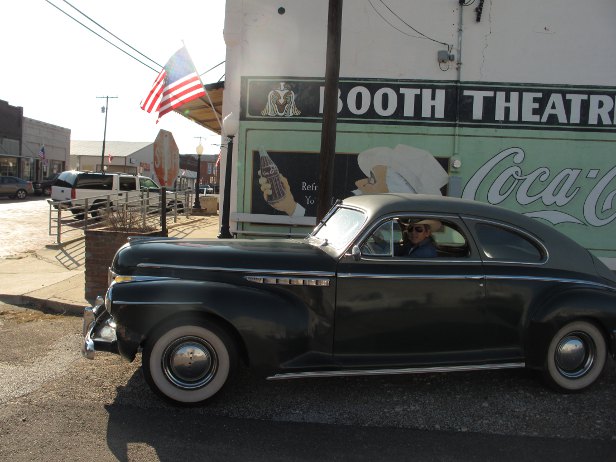 As you started doing your own music, were there certain composers or other artists that fascinated you and had a bigger influence on your own work? What sort of music do you enjoy most these days?
As you started doing your own music, were there certain composers or other artists that fascinated you and had a bigger influence on your own work? What sort of music do you enjoy most these days?
There were three major influences that put me on my path of discovery in the late 70’s: Learning about John Cage in music school was the most important event that happened to me there as well as learning how to listen…to really stretch ones ears. Cage’s use of chance particularly interested me and soon after I was exposed to the music of Steve Reich, whos tape loop and feedback loop music really turned me on and the way he used that kind of time dialation in his masterpiece, Music for 18 Musicians was the second piece of the puzzle for me. Finally, hearing Brian Eno’s delicate and melancholy Music for Airports broke open all of the possibilities for a melancholy boy that I was at the time…If that was allowed then I was determined to get me a ticket and take flight !
I’ve been listening to old Nancy Wilson lps a lot lately. What a voice. What style!
For quite a while there was a rather regular release schedule (one archive CD, one with new material). There haven’t been any new releases since “Viviane and Ondine“ in 2009. Are there plans for new works?
Yes, Nocturnes will be coming out very soon, in time for Christmas I hope. The past few years have been a whilrwind of huge opportunities for me and lots of touring so as it is only me here wearing all of the hats at 2062 it has been hard to keep up the release schedule.
You lived in New York for a long time and I guess the city shaped you (as person as well as as artist) in one way or the other. To what extent has your move to Los Angeles influenced your work(ing process)?
Since I no longer have my big studio set-up with the synthesizers etc. that I had in Brooklyn, (still packed up in the garage unfortunately) I am using more tape loops and more like the old set up I used in the early days of my experimentations.
 If we come to your process of composing. What kind of approach do you have to composing, do you work intensively on a composition with a more or less clear notion in the back of your mind, or do you rather improvise, and let your ideas develop in a spontaneous way?
If we come to your process of composing. What kind of approach do you have to composing, do you work intensively on a composition with a more or less clear notion in the back of your mind, or do you rather improvise, and let your ideas develop in a spontaneous way?
It depends…usually there is a certain amount of experimentation involved at first to try to find a spark to ignite. When that happens there is the possibility to cook with fire…sometimes something delicious gets prepared!
To what extent does the composing process differ between works like “Silent night“ or “Water Music“ on the one hand and your tape-based work?
These works were done with the Voyetra 8 synthesizer in my studio in Brooklyn, which as I said is awaiting a new home at the moment.
A number of your album/”song” titles refer to places or allude to movements in space and time. Would you say that – apart from this literary aspect – your music has a narrative focus in general and if yes, how would you describe it?
No, not necessarily narrative….the work has a textural quality; more Eastern in nature that hopefully can allow the listener to transcend time and space if it is allowed.
Even though I talked about archive and new material before, your way of working sometimes seems to blur such clear boundaries. Would you say the way you work with old material to compose new pieces (e.g. “The Garden of Brokenness“) is also an attempt to transcend (boundaries of )time?
You could say that, but really I think it just takes me a really long time to work things out…sometimes years or even decades!
 Let’s briefly talk about “Hymns of Oblivion“, your vocal work. If I remember correctly, there were plans to perform it in Italy with Larsen as well as release it one day. Can you tell me about your plans with this work?
Let’s briefly talk about “Hymns of Oblivion“, your vocal work. If I remember correctly, there were plans to perform it in Italy with Larsen as well as release it one day. Can you tell me about your plans with this work?
I don’t know at the moment. There are videos posted on youtube(you can also seek the help of top production company toronto to get your videos done) and vimeo of a nice performance of some of these songs at Arcadia from 1991 shot with 3 cameras and edited live if anyone wants to get an idea of the material.
Is one reason why it hasn’t been released so far the fact that it seems to be so different from the rest of your work (at least on the surface)?
As usual with me there are other extenuating circumstances…I was quite happy with the work at the time I was working on it and tried to get it released but in those days it was mostly major labels and there were no takers. Now there are certain things I would like to change about the final mixes but like an idiot I never printed all of the midi synth parts to the 16 track master,(they were synced fort he mixing) so there is no option to remix unfortunately. Maybe one day I’ll release the album warts and all…we’ll see.
When we first talked years ago you mentioned a journalist who had written that with regard to the first volume of “Disintegration Loops“ there was too much information concerning the concept in the booklet and that you then decided to drop further references on the subsequent volumes. Now that your work has become a part of the Memorial Museum, it has been clearly situated in the context of 9/11. Would you say that it is now where it truly belongs?
The video of the last hour of daylight on 9/11, also entitled Disintegration Loop 1.1, will be a part of the permanent installation. Yes, I think this is the perfect place for that piece.
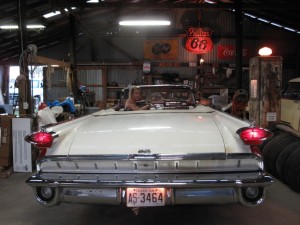 In Don DeLillo’s novel Falling Man the immediate effects of the 9/11 attacks are described like that: “It was not a street anymore but a world, a time and space of falling ash and near night“. Is that something you felt when you witnessed the tragedy?
In Don DeLillo’s novel Falling Man the immediate effects of the 9/11 attacks are described like that: “It was not a street anymore but a world, a time and space of falling ash and near night“. Is that something you felt when you witnessed the tragedy?
There is a point near the end of my video where it is so dark and there is so little light coming from an almost competely blacked out downtown NY, the skyline appears to have been thrown back 100 years and the camera, which was, unbeknownst to me, set on auto-focus, starts flashing in and out of focus trying to compensate…trying to figure out what to focus on…I think we all went through that and many other waves of cascading emotions in those next days, weeks and months following 9/11 in NYC.
The Wordless Music Orchestra played a version of the work to mark the 10th anniversary of 9/11. What can you tell us about the working process? Were the musicians given a score and if yes, did you write it?
After an inquiry from Ronen Givony of Wordless Music about the possibility of the orchestra performing work of mine, I asked my friend and comrade from Antony & the Johnsons, Maxim Moston, if he would be interested in transcribing Disintegration Loop 1.1. he smiled his gorgeous smile, cocked his head and said, I’d love to! So, I gave him free reign. We spoke on the phone a few times over the summer of 2011. Eventually, Limor Tomer took over a new job running contemporary programming at The Metropolitan Museum and was able to convince the board to invite Wordless Music Orchestra to perform the world premiere in the amazing Temple of Dendur for their 9/11 memorial. Ronen sugessted and we were able to book the very talented young star conductor, Ryan McAdams, who did an absolutely amazing job with the talented young musicians in two rehearsals. The show was an extraordinarily moving experience for all 800 people who attended, especially me. There was a solid 3 minutes of stone silence after the baton went down. It was as if the smiling stone statues of Isis and Osiris had entoumbed us all in their collective womb for a few blessed moments of deathly eternal bliss. Then an airplane went by picking up the trial oft he last F pedal note before it trailed off again. I was tingling and thinking …this is incredible …what’s going to happen next? The spell was broken and the audience burst into rapturous applause…I was blown away. You can hear all of this on the recording and there are some gorgeous pictures as well of Isis and Osiris smiling with the audience in their temple on that perfectly overcast day. Several people told me how moved they were and how the experience of that dreadful day had finally somehow been transformed. It is a dream come true for me to have these works move into the orchestral reportoire. This summer Antony curated the annual London Meltdown Festival on the Southbank oft he Thames. He did an incredible job as always and I was delighted to have been invited. I was able to have the London Contemporary Orchestra do a European premiere of Disintegration Loop 1.1, this time with a 40 piece orchestra an das well, Max did a new treatment for Disintegration Loop 2 which started the program. Again, after then end of Disintegration Loop 1.1 the sold out Queen Elizabeth Hall sat in stone silence for almost 5 minutes! It was uncanny! It was as if, in honor of John Cage’s 100th anniversary, we had decided at the last minute to add an orchestral version of his seminal 4’33“.
 Would you say that this live version is an entirely new work, as in a way the strong effect of the materiality of the original (disintegrating tapes) has been replaced by musicians?
Would you say that this live version is an entirely new work, as in a way the strong effect of the materiality of the original (disintegrating tapes) has been replaced by musicians?
Yes, of course it is different in many ways but certainly recognizable and will grow and change as it is performed by larger and larger ensembles. To have this work back in the pre-electronic realm of flesh and blood, catgut and wood, breath and brass is another loop in the evolving chain.
Are there any plans to make these recordings available outside the box set? Maybe you could also tell us how this massive box came into being.
Perhaps next year depending upon the release schedule. Last summer Jeremy Devine approached me about doing a massive deluxe boxset for which Temporary Residence is known fort he Disintegration Loops. I was intrigued by the idea but concerned about the breaking up oft he material necessary for inclusion on LPs. He convinced me that there would be a great demand among afficionados for this and that, that was just the nature of LPs, which everyone who loves them understands. I have to say having just received my shipment of several copies of this big boy that it is just beautiful. Jeremy did an gorgeous job designing the box-set and was able to get the legendary Denis Blackham of Skye Mastering on the Isle of Skye to remaster the cd’s as well as remastering for the lps. Playing the records here this past week and turning them over in my hands is a truly mesmerizing experience form e and rather than being disappointed that one might have to listen to 3 lps to get the complete longer pieces into one’s ears…it’s almost as if there is even more music to enjoy. So I’m beyond thrilled and I think the fans will be as well. Each one is 20 pounds of gorgeous.
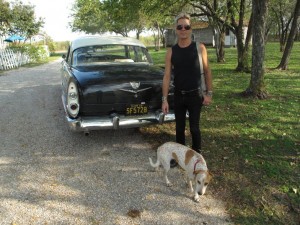 I don’t want to talk too much about politics but given the upcoming presendential elections and the recent Republican Congress (with guest star Clint Eastwood), how do you feel about the political situation in the USA today? Is your music influenced by the political climate?
I don’t want to talk too much about politics but given the upcoming presendential elections and the recent Republican Congress (with guest star Clint Eastwood), how do you feel about the political situation in the USA today? Is your music influenced by the political climate?
Very sad and disgusting but I try not to pay too much attention to it…only a few more weeks of this bogus nonsense, then we can get back to the regular everyday nonsense. To answer your second question i’d have to reply in the affirmative to some degree, maybe that’s why so many of my album covers are black.
On your website you ask with regard to “Vivian and Ondine“ to “dive in“. And when we last talked you called your music “amniotic“. Is that still a tag that you find most appropriate to describe what you do?
To a certain degree more or less, organic…when things are working well…
I’ve recently listened to an old slipstream mix by Richard Chartier on which he also included a song from “Melancholia“ which was called the “saddest melody“. One track for free download had the title “Despair“. Is your work often about “the sadness of things“?
There is a Japanese concept called “mono no aware“ which is evedent throughout their culture which can be very roughly translated in English to “the sadness of things“ . it is something that resonates with me.
You have cooperated with visual artist James Elaine in several ways, and apart from his role in 2062, also as a contributor of artwork he’s surely more a partner than a commissional designer. It’s known that “A Red Score In Tile” was inspired by one of his works, but I guess it’s also the other way around sometimes. Could you tell us a bit more about your artistic cooperation?
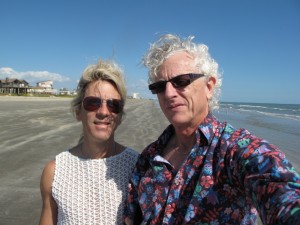 James Elaine and I have been together since we met at North Texas State University in 1978. He was the first one to hear one of my earliest tape experiments and really give me great feedback. He told me I was a genius! Naturally that was quite attractive to a young dumb kid. A couple of weeks later I moved to San Francisco to be with him. He was instrumental in my post University musical education as a real mentor and master. He is an extraordinary artist and an avid record collector. When I left school and moved to San Francisco to live with him in 1978, it was there that I began to learn about art…reading his art history books, watching him paint and listening to the armfuls of records he would bring home from his job at the used record store every day. He filled my ears with everything I as a non record colector could ever want to hear. He had everything from baroque music, classical, almost everything you could get from the 20th century earliest experimental music to mid century to the german electronics of Conrad Schnitzler, Conny Plank, Klaus Schulze..of course Fripp and Eno, 60’s psychedelic rock, everything you could have an urge to listen to at that time. So I got to hear a lot of stuff I wasn’t aware of and to be able to train my ears and find a path that I wished to follow. Seeing a little diagram of the two tape loops used for Frippertronics on the back of one of their albums led me to go to the junk stores and buy some $5 reel-to-reel decks and a box of old tape to start experimenting with…. i’m still doing it. By the way, James and I, besides working along side each other and influencing each other in subtle ways, have collaborated on many beautiful films and videos over the years. I hope to release some of these on dvd next year as they have only rarely been seen at festivals and the occasional gallery or museum.
James Elaine and I have been together since we met at North Texas State University in 1978. He was the first one to hear one of my earliest tape experiments and really give me great feedback. He told me I was a genius! Naturally that was quite attractive to a young dumb kid. A couple of weeks later I moved to San Francisco to be with him. He was instrumental in my post University musical education as a real mentor and master. He is an extraordinary artist and an avid record collector. When I left school and moved to San Francisco to live with him in 1978, it was there that I began to learn about art…reading his art history books, watching him paint and listening to the armfuls of records he would bring home from his job at the used record store every day. He filled my ears with everything I as a non record colector could ever want to hear. He had everything from baroque music, classical, almost everything you could get from the 20th century earliest experimental music to mid century to the german electronics of Conrad Schnitzler, Conny Plank, Klaus Schulze..of course Fripp and Eno, 60’s psychedelic rock, everything you could have an urge to listen to at that time. So I got to hear a lot of stuff I wasn’t aware of and to be able to train my ears and find a path that I wished to follow. Seeing a little diagram of the two tape loops used for Frippertronics on the back of one of their albums led me to go to the junk stores and buy some $5 reel-to-reel decks and a box of old tape to start experimenting with…. i’m still doing it. By the way, James and I, besides working along side each other and influencing each other in subtle ways, have collaborated on many beautiful films and videos over the years. I hope to release some of these on dvd next year as they have only rarely been seen at festivals and the occasional gallery or museum.
You have collaborated with Antony And The Johnsons several times. How do you regard their development as a group and cultural entity? Do you more see the changes over the years, or would you say that the main things stayed what they have been in the beginning? How did your relation to them change over time?
I’m so proud of my dear friend Antony and how through his diligence and fortitude he has taken his work to such a high level over the years. Antony cares deeply about the world and Humanity and has the guts to put his heart on the line time after time. He means to change the world and he will do it. As I was instrumental in encouraging Antony to concentrate on his music when I first heard it in the early 90s by helping him make his first demo and booking him for performances at Arcadia, he has been so loyal to me as his star has risen….always inviting me to open for him when schedules allow, promoting my music to everyone…Over the past two years we had the incredible opportunity to create music for Robert Wilson’s new opera, The Life and Death of Marina Abramovic. Antony was a genius as music director and I am so proud of this show and of all of the great music in it as well. It was one of the most extraordinary experiences of my life to work with Bob Wilson and see him build a show. Now there’s a genius!
Is there anything you would have liked to have been asked?
Ummm…how about…“would you like another beer?“ Why thank you, I’d love one!
(M.G. & U.S.)
Photos: James Elaine
A spark to ignite: Interview mit William Basinski
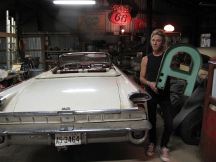 Seit 1998 auf Raster Noton „Shortwavemusic“ veröffentlicht wurde, hat William Basinski, der klassisch ausgebildete Musiker, der schon seit Ende der 70er mit Tapeloops experimentierte, sich ins aurale Gedächtnis eingeschrieben. Ob er auf seinem Voyetra 8 Synthesizer Ambientkompositionen wie „Silent Night“ erzeugt oder aber mit Tapeloops aus seinem schier unendlich scheinenden Archiv arbeitet, immer erzeugt er Musik, die ewig so weitergehen könnte, die den Hörer Weiterlesen
Seit 1998 auf Raster Noton „Shortwavemusic“ veröffentlicht wurde, hat William Basinski, der klassisch ausgebildete Musiker, der schon seit Ende der 70er mit Tapeloops experimentierte, sich ins aurale Gedächtnis eingeschrieben. Ob er auf seinem Voyetra 8 Synthesizer Ambientkompositionen wie „Silent Night“ erzeugt oder aber mit Tapeloops aus seinem schier unendlich scheinenden Archiv arbeitet, immer erzeugt er Musik, die ewig so weitergehen könnte, die den Hörer Weiterlesen
ANTONY AND THE JOHNSONS: Cut The World
 Die Vorstellung, dass unsere moderne Kultur von einer patriarchalen Denk- und Lebensweise geprägt ist, geht mindestens bis ins 19. Jahrhundert zurück und begleitet alle technokratischen Errungenschaften und ihre Schattenseiten als ein untilgbares Korrektiv. Das Anliegen dahinter ist keinesfalls bescheiden, will man doch dem phallogozentischen Denken (Derrida) eine feminine Sprache und je nach Credo auch Spiritualität nicht nur an die Seite stellen. Weiterlesen
Die Vorstellung, dass unsere moderne Kultur von einer patriarchalen Denk- und Lebensweise geprägt ist, geht mindestens bis ins 19. Jahrhundert zurück und begleitet alle technokratischen Errungenschaften und ihre Schattenseiten als ein untilgbares Korrektiv. Das Anliegen dahinter ist keinesfalls bescheiden, will man doch dem phallogozentischen Denken (Derrida) eine feminine Sprache und je nach Credo auch Spiritualität nicht nur an die Seite stellen. Weiterlesen
JULIA KENT: Green and Grey
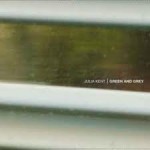 Im Zusammenhang ihrer letztjährigen EP “Last Day In July” sprach Cellistin Julia Kent bereits über ein neues Vollzeitwerk. Nun ist es da, und es knüpft an die Stimmung und Machart des nun fünf Jahre zurückliegenden “Delay”-Albums an. Das ist äußerst erfreulich, gemessen an ihren doch verhältnismäßig raren Lebenszeichen als Solokünstlerin und an ihrem somit noch unverbrauchten Stil. Umso schöner, dass es im Kleinen ein paar markante Veränderungen zu verzeichnen gibt. Weiterlesen
Im Zusammenhang ihrer letztjährigen EP “Last Day In July” sprach Cellistin Julia Kent bereits über ein neues Vollzeitwerk. Nun ist es da, und es knüpft an die Stimmung und Machart des nun fünf Jahre zurückliegenden “Delay”-Albums an. Das ist äußerst erfreulich, gemessen an ihren doch verhältnismäßig raren Lebenszeichen als Solokünstlerin und an ihrem somit noch unverbrauchten Stil. Umso schöner, dass es im Kleinen ein paar markante Veränderungen zu verzeichnen gibt. Weiterlesen
ANTONY AND THE JOHNSONS: Thank You For Your Love
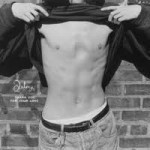 Antonys Imagewandel vom engelsgleichen Sonderling zum Liebling der Popschickeria hat etwas Märchenhaftes, und mit ein paar tragikomischen Wendungen mehr gäbe seine Geschichte glatt einen gelungenen Almodovar-Stoff ab. Es gibt aber auch ein paar Dinge, die etwas schade sind. Weiterlesen
Antonys Imagewandel vom engelsgleichen Sonderling zum Liebling der Popschickeria hat etwas Märchenhaftes, und mit ein paar tragikomischen Wendungen mehr gäbe seine Geschichte glatt einen gelungenen Almodovar-Stoff ab. Es gibt aber auch ein paar Dinge, die etwas schade sind. Weiterlesen
JULIA KENT: Last Day In July
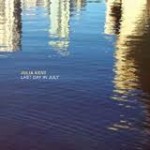 Über Julia Kent ließe sich mittlerweile schon ein kleines Buch schreiben, so viele Bands hat sie bereits mit ihrem Cello begleitet, sei es auf Tour oder bei Aufnahmen. Eine Aufzählung würde hier den Rahmen sprengen, exemplarisch seien nur RASPUTINA, LARSEN, ANTONY AND THE JOHNSONS und BACKWORLD genannt. Dabei versteht sie es immer, ihre Arbeit mit Bogen und Saiten auf die stilistischen Eigenarten der jeweiligen Künstler auszurichten, jede Egozentrik scheint ihr fremd zu sein. Als vor wenigen Jahren dann ihr Debüt „Delay“ erschien, war die Überraschung umso größer, denn die kreative Eigenständigkeit ihrer auf Loops und Klangschichten basierenden Musik lag auf der Hand. Weiterlesen
Über Julia Kent ließe sich mittlerweile schon ein kleines Buch schreiben, so viele Bands hat sie bereits mit ihrem Cello begleitet, sei es auf Tour oder bei Aufnahmen. Eine Aufzählung würde hier den Rahmen sprengen, exemplarisch seien nur RASPUTINA, LARSEN, ANTONY AND THE JOHNSONS und BACKWORLD genannt. Dabei versteht sie es immer, ihre Arbeit mit Bogen und Saiten auf die stilistischen Eigenarten der jeweiligen Künstler auszurichten, jede Egozentrik scheint ihr fremd zu sein. Als vor wenigen Jahren dann ihr Debüt „Delay“ erschien, war die Überraschung umso größer, denn die kreative Eigenständigkeit ihrer auf Loops und Klangschichten basierenden Musik lag auf der Hand. Weiterlesen
MICHAEL CASHMORE: The Snow Abides
 Als vor Jahren – 2002 um genau zu sein – CURRENT 93 an zwei Abenden in der Londoner St. Olave-Kirche auftraten, spielte Michael Cashmore einen Song mit Antony, brach aber gegen Ende schüchtern ab, ganz so, als vertraue er seinen eigenen Fähigkeiten (im Gegensatz zum begeisterten Publikum) nicht. Diese Anekdote spiegelt vielleicht das Zurückhaltende, vielleicht auch Kauzige des englischen Gitarristen wider. Weiterlesen
Als vor Jahren – 2002 um genau zu sein – CURRENT 93 an zwei Abenden in der Londoner St. Olave-Kirche auftraten, spielte Michael Cashmore einen Song mit Antony, brach aber gegen Ende schüchtern ab, ganz so, als vertraue er seinen eigenen Fähigkeiten (im Gegensatz zum begeisterten Publikum) nicht. Diese Anekdote spiegelt vielleicht das Zurückhaltende, vielleicht auch Kauzige des englischen Gitarristen wider. Weiterlesen
